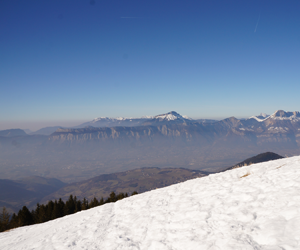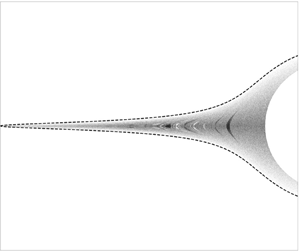Most cited
This page lists all time most cited articles for this title. Please use the publication date filters on the left if you would like to restrict this list to recently published content, for example to articles published in the last three years. The number of times each article was cited is displayed to the right of its title and can be clicked to access a list of all titles this article has been cited by.
- Cited by 5
Acoustic behaviour of a liquid/vapour mixture in a standing-wave tube
-
- Published online by Cambridge University Press:
- 26 April 2006, pp. 67-89
-
- Article
- Export citation
- Cited by 5
Wave motion in a viscous fluid of variable depth
-
- Published online by Cambridge University Press:
- 26 April 2006, pp. 365-372
-
- Article
- Export citation
- Cited by 5
Instability of wind-forced inertial oscillations
-
- Published online by Cambridge University Press:
- 26 April 2006, pp. 323-349
-
- Article
- Export citation
- Cited by 5
A wake singularity potential flow model for airfoils experiencing trailing-edge stall
-
- Published online by Cambridge University Press:
- 26 April 2006, pp. 203-218
-
- Article
- Export citation
- Cited by 5
Dynamics of spatially localized states in transitional plane Couette flow
-
- Published online by Cambridge University Press:
- 25 March 2019, pp. 414-437
-
- Article
- Export citation
- Cited by 5
Statistical analysis of outer large-scale/inner-layer interactions in channel flow subjected to oscillatory drag-reducing wall motion using a multiple-variable joint-probability-density function methodology
-
- Published online by Cambridge University Press:
- 27 July 2021, A25
-
- Article
- Export citation
- Cited by 5
Stability of gravity currents generated by finite-volume releases
-
- Published online by Cambridge University Press:
- 14 August 2006, pp. 261-278
-
- Article
- Export citation
- Cited by 5
The response of sheared turbulence to changes in curvature
-
- Published online by Cambridge University Press:
- 10 March 1998, pp. 223-244
-
- Article
- Export citation
- Cited by 5
Hydrodynamic interactions between aerosol particles in the transition regime
-
- Published online by Cambridge University Press:
- 19 September 2018, pp. 535-553
-
- Article
- Export citation
- Cited by 5
Surface layer response to heterogeneous tree canopy distributions: roughness regime regulates secondary flow polarity
-
- Published online by Cambridge University Press:
- 08 August 2022, A28
-
- Article
- Export citation
- Cited by 5
Mean flow structure of katabatic winds and turbulent mixing properties
-
- Published online by Cambridge University Press:
- 25 April 2022, A11
-
- Article
- Export citation
- Cited by 5
The onset of zonal modes in two-dimensional Rayleigh–Bénard convection
-
- Published online by Cambridge University Press:
- 23 March 2022, A8
-
- Article
- Export citation
- Cited by 5
An anisotropic particle in a simple shear flow: an instance of chaotic scattering
-
- Published online by Cambridge University Press:
- 19 February 2021, A2
-
- Article
- Export citation
- Cited by 5
The interaction of a point vortex with a wall-bounded vortex layer
-
- Published online by Cambridge University Press:
- 25 July 1997, pp. 169-195
-
- Article
- Export citation
- Cited by 5
Transition from hydrodynamic turbulence to magnetohydrodynamic turbulence in von Kármán flows
-
- Published online by Cambridge University Press:
- 09 January 2012, pp. 243-260
-
- Article
- Export citation
- Cited by 5
Weak–strong clustering transition in renewing compressible flows
-
- Published online by Cambridge University Press:
- 25 November 2014, pp. 431-442
-
- Article
- Export citation
- Cited by 5
Linear stability of inviscid vortex rings to axisymmetric perturbations
-
- Published online by Cambridge University Press:
- 15 July 2019, pp. 1115-1146
-
- Article
- Export citation
- Cited by 5
Oscillatory double-diffusive instabilities in a vertical slot
-
- Published online by Cambridge University Press:
- 12 January 2001, pp. 347-354
-
- Article
- Export citation
- Cited by 5
Proper orthogonal decomposition in the analysis of a laboratory simulation of land- and sea-breeze regimes
-
- Published online by Cambridge University Press:
- 23 June 2004, pp. 1-28
-
- Article
- Export citation
- Cited by 5
A transonic small-disturbance model for the propagation of weak shock waves in heterogeneous gases
-
- Published online by Cambridge University Press:
- 06 March 2001, pp. 255-280
-
- Article
- Export citation



























































 , so as to take into account the influence of the interaction parameter
, so as to take into account the influence of the interaction parameter  . This effective magnetic Reynolds number leads to unified scalings for both global variables and the locally induced magnetic field. In addition, when the flow rotation axis is perpendicular to the direction of the applied magnetic field, significant flow and induced magnetic field fluctuations are observed at low interaction parameter values, but corresponding to an Alfvèn speed
. This effective magnetic Reynolds number leads to unified scalings for both global variables and the locally induced magnetic field. In addition, when the flow rotation axis is perpendicular to the direction of the applied magnetic field, significant flow and induced magnetic field fluctuations are observed at low interaction parameter values, but corresponding to an Alfvèn speed  of the order of the fluid velocity fluctuations
of the order of the fluid velocity fluctuations  . This strong increase in the flow fluctuations is attributed to chaotic changes between hydrodynamic and magnetohydrodynamic velocity profiles.
. This strong increase in the flow fluctuations is attributed to chaotic changes between hydrodynamic and magnetohydrodynamic velocity profiles.